Description
Price: $14.99
(as of May 22,2023 12:30:51 UTC – Details)
From the Publisher
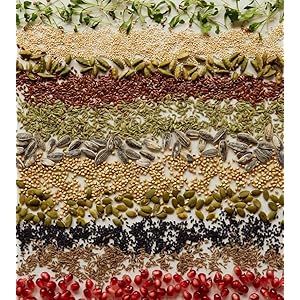
Introduction: the seed of life
Seeds have played a central role in culinary traditions for thousands of years, and are now becoming even more popular as people look for healthy and sustainable – as well as delicious – alternatives in their diet. Many people are choosing to limit their intake of saturated fats, and considering the benefits of vegetarian and vegan approaches to nourishment.
But if you’re reducing the animal-based proteins in your diet, it’s important to make sure that you replace them with other proteins, since the healthy growth and development of every organ in the body depends on them. Seeds, the ‘life force’ of every plant, flower, herb, fruit, vegetable and wholegrain we eat, are the building blocks of all vegetable protein, and provide these nutrients in abundance.
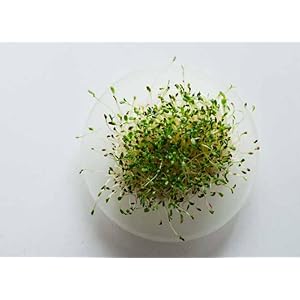

Soaking & sprouting
When any dried seed is soaked in water, the enzymes it contains are triggered to ‘come alive’ and start the growth process. In nature, this activation may occur almost immediately the seed is expelled from the parent plant, or it may not happen for many years. Seeds from antiquity have been found on archeological sites that have been successfully activated after an interval of hundreds, if not thousands, of years, allowing scientist to determine the exact nature of the contemporary vegetation.
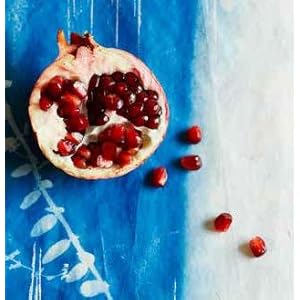

Harvesting & collecting
A plant’s seeds are generally fully developed when the plant has flowered, and the flower is over, or starting to dry out. In the drying process, the seeds will fall or be blown from the plant, or released in some other way to start a new plant of their own.
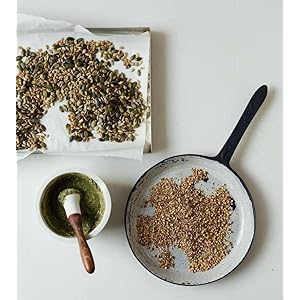

Roasting & toasting
I like to have my seeds available to use in fairly large quantities so that if I need only a few to sprinkle, or to add to a a meal for one, I don’t have to think about cooking a batch specifically for the purpose. Remember that being prepared is the most efficient tool you can have in your kitchen: if you cook ahead, then store or chill the surplus seeds in the fridge, you won’t have to roast or toast them every time you are preparing a single recipe.
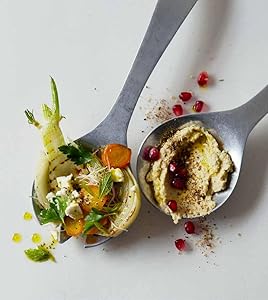

Fennel and hummus salad with pomegranate seeds
Serves: 4 Prep: 15 mins Cook: 6 mins
This versatile salad can be easily transformed from an appetizer or light lunch into a main meal. Make good use of the attractive feathery tops from the fennel bulbs: snip them over the salad just before serving. It’s packed full of seeds thanks to the seedy dressing, hummus and ruby red pomegranate garnish.
1 Drizzle the fennel slices with the olive oil and cook on a hot griddle pan over a high heat or a barbecue for about 3 minutes each side until slightly tender and lightly charred.
2 Put the fennel in a bowl with the beetroot, spring onions, sprouted seeds, herbs and feta. Season with a little salt and pepper, add the dressing, and toss.
3 Take 4 serving plates and smear the hummus generously in a circle on each one.
4 Top with the fennel and feta mixture. Sprinkle with za’atar and pomegranate seeds and serve while the fennel is still warm.
Or you can try this…
Use griddled sliced halloumi cheese instead of feta.
Mix in some sliced oranges or peaches for a sweeter, more refreshing salad.
For a more substantial dish, mix with some quinoa or sprouted buckwheat.
2 fennel bulbs, trimmed and thinly sliced 1 tbsp fruity green olive oil 400g/14oz cooked small golden beetroot (beets), sliced 1 bunch spring onions (scallions), thinly sliced 125g/4oz/2 cups mixed sprouted seeds, e.g. alfalfa, broccoli 1 handful of mint, chopped 1 handful of flat-leaf parsley, chopped 225g/8oz/2 cups feta, diced 3–4 tbsp orange and lemon poppyseed dressing (see page 116) 1 quantity coriander seed hummus (see page 102) ½ tsp za’atar seeds of 1 pomegranate salt and freshly ground black pepper
Publisher : Jacqui Small (March 16, 2017)
Language : English
Hardcover : 176 pages
ISBN-10 : 1847809251
ISBN-13 : 978-1847809254
Item Weight : 1.9 pounds
Dimensions : 8.5 x 0.75 x 9.5 inches






Reviews
There are no reviews yet.